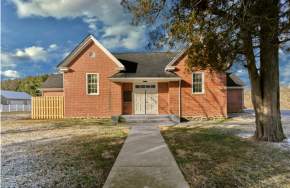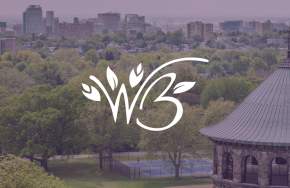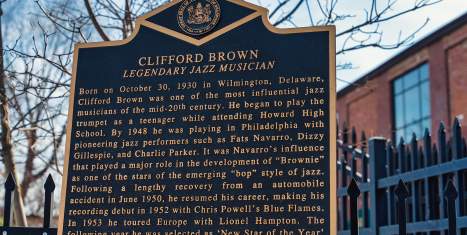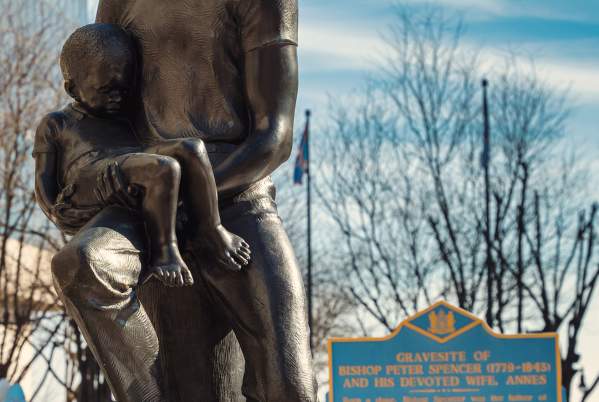Wilmington, Delaware:
Landmarks of Black History and Culture
Wilmington and the Brandywine Valley played a significant role in the Underground Railroad movement. Local residents also helped lay the groundwork for Civil Rights victories like Brown v. Board of Education.
We celebrate this rich history with annual can’t-miss festivals like the August Quarterly, the nation’s oldest African American religious celebration, and the Soul of the City Festival, where drum-line professionals and hip-hop dancers line the streets.
Read on for more information about some of Delaware’s most distinguished Black citizens (and one legendary Quaker ally of the enslaved) as well as the sites and festivals that are significant to their legacy.
Louis L. Redding
Redding was born in Virginia in 1903 but grew up in Wilmington. In 1928, he was the only African American in Harvard Law School’s graduating class. The next year, he became the first African American admitted to the Delaware bar.
After he had attained his law degree, Redding became a passionate crusader for equal access to education. He filed the case that resulted in the University of Delaware’s racial integration in the 1950s. He also filed two of five cases concerning segregation and its impact that were consolidated into the landmark U.S. Supreme Court ruling in Brown v. Board of Education.
 Louis L. Redding Sites of Interest
Louis L. Redding Sites of Interest
Outside the Louis L. Redding City/County Building is a sculpture of Redding. He is depicted alongside an African American boy and a white girl, to represent his significant contribution to school integration.
The Mitchell Center for African American Heritage at the Delaware History Museum explores the Black experience in Delaware from pre-colonial days to the present and highlights prominent Delawareans of color, including Redding.
The former Hockessin Colored School #107C has been restored and transformed into a Center for Diversity, Inclusion, and Social Equity. It is open to the public and contains exhibits illustrating life at the school, which was built in 1920. The Bulah family’s efforts to gain bus transportation to the school for their daughter Shirley formed one of the cases Redding litigated.
The Claymont Community Center operates from the former Claymont High School building, built in 1924 for white students. Redding was hired by a group of Black parents who sought admission for their children to the local school instead of sending them all the way to Howard High School in Wilmington. The “Claymont Twelve” group of students integrated the school under a court order in 1952.
Sites to Visit
Louis Redding Building and Statue
- 800 N. French St.
Named in honor of Delaware’s first Afro-American attorney, graduate of Howard High School, Brown University, and Harvard Law School, admitted to the Delaware Bar in 1929…
Mitchell Center for African American Heritage
- 505 N Market St
The Jane and Littleton Mitchell Center for African American Heritage offers an expansive exploration of the African American experience from 1639 to the present through…
Hockessin Colored School #107
- 4266 Millcreek Road,
The school was the center of the 1952 Delaware court case known as Bulah v. Gebhart, which would be combined with four other cases to become the Brown v. Board of Education…
Claymont Community Center
- 3301 Green St.
Claymont Community Center was founded by community leaders in 1975 to support the needs of children and families in Claymont, Delaware. The center operates from the former…
 Clifford Brown
Clifford Brown
Brown, one of the most influential jazz musicians of the mid-20th century, was born in Wilmington.
Beginning in the late 1940s, he performed with pioneering performers such as Fats Navarro, Dizzy Gillespie, and Charlie Parker, playing a major role in developing the “bop” style of jazz. His Clifford Brown-Max Roach Quintet is considered one of the greatest “hard bop” ensembles of all time. The Clifford Brown Jazz Festival takes place each summer at Rodney Square.
Clifford Brown Sites of Interest
On Clifford Brown Walk, between E. 15th and 16th Streets, lies the entrance to the Clifford Brown Listening Garden. Note the outline of a trumpet on the walkway and the twin obelisks carved with musical notes. You should hear some of Brown’s music play as you approach.
Off Lancaster Pike lies historic Mt. Zion Cemetery, where Brown was laid to rest. Find his gravesite just inside the gate to the right.
Every June, the City of Wilmington, Delaware remembers Clifford Brown with the annual Clifford Brown Jazz Festival. The festival is one of the largest free jazz festivals on the East Coast and runs for five nights in Wilmington's Rodney Square.
Sites of Interest
Clifford Brown Listening Garden
- 1500 Clifford Brown Walk
Mt. Zion Cemetery
- Mount Zion Cemetery
Clifford Brown Jazz Festival
- Rodney Square
 Peter Spencer
Peter Spencer
Spencer was born into slavery in Maryland but spent most of his life in Wilmington as a free man.
After experiencing discrimination at an existing house of worship, he spearheaded the movement that led to the founding of the Union Church of Africans, considered the first independent church of African Americans. It predates the better-known African Methodist Episcopal/AME church in Philadelphia by several years.
Peter Spencer Sites of Interest
The Ezion-Mount Carmel United Methodist Church is the oldest continuously operating Black church in Delaware. Spencer and other African Americans founded the congregation in 1805. Ezion-Mount Carmel considers itself a “Safe Sanctuary,” where all are invited to come and worship.
Peter Spencer Plaza is dedicated to Spencer’s memory. Don’t miss Charles Parks’ powerful sculpture “Father and Son,” which is located here, or the historical marker honoring noted Wilmington abolitionist Abraham Shadd and his family.
Sites of Interest
Ezion Mt Carmel United Methodist Church
- 800 N Walnut St
The historical Ezion-Mount Carmel United Methodist Church represents the union of two dynamic churches, formerly known as Ezion Methodist Episcopal Church and Mount Carmel…
Peter Spencer Plaza
- 800 North French St.
In 1813, when Delaware laws required white supervision of any religious or other gathering of people of color, Spencer defied that law to found the nation's first independent…
 Thomas Garrett
Thomas Garrett
Thomas Garrett was a Wilmington-based American abolitionist and leader in the Underground Railroad movement.
Working closely with legendary Underground Railroad conductor Harriet Tubman, Garrett assisted some 2,700 fugitives in their journey to freedom.
Thomas Garrett Sites of Interest
Tubman-Garrett Riverfront Park in Wilmington is notable for its striking, dynamic sculpture that depicts both Tubman and Garrett, as well as representations of freedom seekers and symbols of the Underground Railroad work. Garrett’s home and shop were only a few blocks further north on Shipley Street. You will find a marker at the corner of 4th Street.
Garrett’s 1848 trial for violating the Fugitive Slave Act took place at the New Castle Court House, which is now a museum. It features an exhibit on Garrett and other abolitionists and tells the story of Emeline Hawkins, whose escape from slavery was an important issue at the trial.
Since 1738 the Quaker Hill Meeting House in Wilmington has held Monthly Meetings of the Religious Society of Friends. Thomas Garrett, Delaware’s Greatest Stationmaster on the Underground Railroad, and ally of Harriet Tubman, was a prominent member of the meeting house. The small cemetery on the property is the final resting place for Garrett.
Sites of Interest
Tubman-Garrett Riverfront Park
- Rosa Parks Drive
New Castle Court House Museum
- 211 Delaware St.
Quaker Hill Meeting House
- 401 N West St
 Bob Marley
Bob Marley
The reggae icon spent much of the 1960s and 1970s living at or visiting his mother’s Wilmington house, where he also wrote some of his first songs.
The People’s Festival 4Peace, which celebrates Marley’s music and legacy, is held each fall at Tubman-Garrett Park.
Bob Marley Sites of Interest
The house where Marley’s mother lived is on Tatnall Street but isn’t open to the public. Instead, stop by the intersection of 24th and Tatnall Streets for a visit to One Love Park, which contains a historical marker and was dedicated in Marley’s honor in 2014. A home on 24th Street, right opposite the park, is decorated with several striking Marley murals.
Sites of Interest
Peoples' Festival 4Peace Tribute to Bob Marley
- Tubman Garrett Riverfront Park
Enjoy activities at the Children's Village, an International Food Court, Peace Pavilion, Healing Garden, Bamboo Hut, Arts & Crafts from around the world and a Noon-Time Drum…
Tatnall Playground/One Love Park
- 2316 N. Tatnall St.
One Love Park is located in the 2nd Councilmanic District at the intersection of N.Tatnall and W. 24th Streets. The park was named Tatnall Street Playground in 1907, and…


















